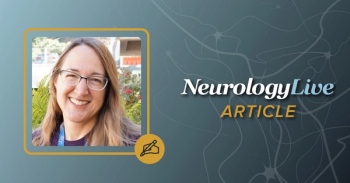
The Importance of Healthy Living in Patients With Narcolepsy
Healthy lifestyle choices are an integral part of disease management for patients with narcolepsy who face an increased prevalence of comorbid cardiovascular and metabolic conditions.
Robert Iannone, MD, MSCE
Jazz Pharmaceuticals Sponsored Content
Although much progress has been made in the research of sleep disorders, research has also demonstrated an increase in prevalence of comorbid conditions among patients with narcolepsy, including hypertension, cardiovascular disease, and metabolic dysfunction such as diabetes.1-4 Conversations between a patient and their physician must include an understanding of the importance of holistic health and the need to pay close attention to lifestyle, healthy food and beverage choices, and treatment options.
We at Jazz Pharmaceuticals are proud to be playing a critical role in helping people living with sleep disorders better understand and safely address the impact that these disorders have on their lives so that they can enjoy the highest possible quality of life. Leading this evolution means joining forces with patients, advocates, health care practitioners, sleep and neuroscience specialists, researchers, and scientists around the world to raise awareness—but also doubling down our own research and development (R&D) capabilities in scale, investment, and scope as we have done over the last 5 years. We are constantly working to bring our medicines to more patients around the world, collaborating with advocacy groups and supporting education on the needs of—and solutions for—people living with sleep disorders.
Narcolepsy is a chronic, debilitating neurological disorder with no cure that often warrants long-term treatment, and the disease burden can have a far-reaching impact on a patient’s health.1-5 This reality makes it all the more important that patients are fully educated regarding healthy living choices that should be at the forefront of their decision-making in everything they do. We have an obligation to ensure there is a deep understanding of the increased prevalence of comorbidities,6,7 so that patients can be in the best possible position to thoughtfully determine their own strategic course of action. At Jazz, we see ourselves as a committed and essential partner to patients and families coping with sleep disorders. We take this role seriously, and it will always drive our thinking, our investment, and our overall R&D paradigm.
Jazz Pharmaceuticals: A History of R&D Commitment to an Underserved Population
I have the privilege of leading an incredibly dedicated team of scientists and researchers that comprise our robust R&D efforts at Jazz Pharmaceuticals. For more than 15 years, we have led the evolution of sleep medicine to offer better therapies for patients with sleep disorders. We are committed to addressing conditions of high unmet need and pursuing early R&D in sleep and related neuroscience. Our commitment to patients with sleep disorders is to continuously advance the science behind our therapies to help optimize the management of sleep conditions.
Our research has allowed us to understand and build our developmental work around the painful reality that sleep disorders can impact every facet of someone’s life, from work and relationships to even the most mundane daily tasks. More recently, we have expanded our research into other areas of neuroscience, including movement disorders such as essential tremor. Our commitment to the patients we currently serve and those we hope to serve in the future is what propels us forward.
Persistence and Breakthroughs to Advance Patient Care
In 2005, Jazz Pharmaceuticals introduced groundbreaking FDA-approved therapy for cataplexy associated with narcolepsy. It was a significant moment for patients with narcolepsy around the world who, until this introduction, had severe unmet needs and few treatment options. Additional R&D work led to expanded labeling of the therapy to include excessive daytime sleepiness (EDS), an important development milestone as both cataplexy and EDS are 2 of the main symptoms of narcolepsy.8
Ongoing insight gathering, such as surveys and countless conversations with physicians, patients, caregivers, and patient advocates helped us determine our next priority: developing a treatment option for narcolepsy that maintained the efficacy of our existing therapy, but with a significantly lower sodium content, which recently received FDA approval.9
The average American consumes too much sodium.10 The American Heart Association recommends a daily sodium intake not to exceed 2300 milligrams, with an ideal limit of less than 1500 milligrams for most adults.11 However, despite the recommended limit, the estimated mean daily dietary sodium intake is 4240 milligrams for adult men and 2980 milligrams for adult women in the US.12
Excess sodium intake has been linked with increases in blood pressure, hypertension, stroke, and other cardiovascular diseases13-16—many of which patients with narcolepsy are already at increased risk for.1-4
A Brighter Future If We Work Together as One
Despite today’s state of remarkable technological and scientific advancement, studies have shown it may take 10 years or more for people with narcolepsy to receive a diagnosis.17,18
We owe it to ourselves as leaders in patient care, medical science, research, and development, and most importantly, to those whose lives we have the opportunity to improve, to never accept today what can be improved upon tomorrow. There continues to be far too many patients with narcolepsy with unmet needs. We must work together across the global sleep community to address these challenges and improve patients’ lives. This includes sleep specialists, primary care physicians, technology companies, clinical R&D teams, hospital systems, caregivers, and patient advocates.
We have long known the challenges patients with narcolepsy face if they remain undertreated and unaware of the disorder and the comorbidity burden.1-4 We must pull together to educate patients and colleagues alike. It is long overdue for narcolepsy to be better understood.
When healthcare providers develop treatment regimens for their patients with narcolepsy that have an already increased prevalence of potentially serious conditions, they need to educate their patient on living the healthiest possible lifestyle, including diet, nutrition and exercise.
Jazz has committed resources to sleep medicine since the company was founded, and we are in a unique position to drive innovation for the future and expand our efforts into broader neuroscience specialties. We take this responsibility seriously and will continue to invest in new medicines that offer patients options to live happier, healthier, and more fulfilled lives.
Robert Iannone, MD, MSCE, is executive vice president, research and development, Jazz Pharmaceuticals.
REFERENCES
1. Black J, Reaven NL, Funk SE, et al. Medical comorbidity in narcolepsy: findings from the Burden of Narcolepsy Disease (BOND) study. Sleep Med. 2017;33:13-18. doi:10.1016/j.sleep.2016.04.004
2. Ohayon MM. Narcolepsy is complicated by high medical and psychiatric comorbidities: a comparison with the general population. Sleep Med. 2013;14(6):488-492. doi:10.1016/j.sleep.2013.03.002
3. Cohen A, Mandrekar J, St Louis EK, Silber MH, Kotagal S. Comorbidities in a community sample of narcolepsy. Sleep Med. 2018;43:14-18. doi:10.1016/j.sleep.2017.11.1125
4. Jennum P, Ibsen R, Knudsen S, Kjellberg J. Comorbidity and mortality of narcolepsy: a controlled retro- and prospective national study. Sleep. 2013;36(6):835-840. doi:10.5665/sleep.2706
5. National Institute of Neurological Disorders and Stroke (NINDS). Narcolepsy Fact Sheet. Updated March 16, 2020. Accessed March 2020.
6. Bibbins-Domingo K, Chertow GM, Coxson PG, et al. Projected effect of dietary salt reductions on future cardiovascular disease. N Engl J Med. 2010;362(7):590‐599. doi:10.1056/NEJMoa0907355
7. Cook NR, Cutler JA, Obarzanek E, et al. Long term effects of dietary sodium reduction on cardiovascular disease outcomes: observational follow-up of the trials of hypertension prevention (TOHP). BMJ. 2007;334(7599):885-888. doi:10.1136/bmj.39147.604896.55
8. Pelayo R, Lopes MC. Narcolepsy. In: Lee-Chiong TL, ed. Sleep: A Comprehensive Handbook. Hoboken, NJ: Wiley and Sons, Inc.; 2006:145-149.
9. Data on File. Jazz Pharmaceuticals.
10. Jackson SL, King SM, Zhao L, Cogswell ME. Prevalence of Excess Sodium Intake in the United States - NHANES, 2009-2012. MMWR. Morbidity and Mortality Weekly Report. 2016;64(52):1393-1397. doi:10.15585/mmwr.mm6452a1
11. American Heart Association. How much sodium should I eat per day?. Updated May 23, 2018. Accessed May 2020. https://www.heart.org/en/healthy-living/healthy-eating/eat-smart/sodium/how-much-sodium-should-i-eat-per-day
12. USDA. 2019. Dietary guidelines for Americans. Accessed May 2020. https://www.dietaryguidelines.gov/sites/default/files/2019-05/2015-2020_Dietary_Guidelines.pdf
13. Elliott P, Stamler J, Nichols R, et al. Intersalt revisited: further analyses of 24 hour sodium excretion and blood pressure within and across populations. Intersalt Cooperative Research Group [published correction appears in BMJ. 1997;315(7106):458]. BMJ. 1996;312(7041):1249-1253. doi:10.1136/bmj.312.7041.1249
14. Mente A, O’Donnell MJ, Rangarajan S, et al. Association of Urinary Sodium and Potassium Excretion with Blood Pressure. N Engl J Med. 2014; 371:601-611. doi:10.1056/NEJMoa1311989
15. Gardener H, Rundek T, Wright CB, Elkind MS, Sacco RL. Dietary sodium and risk of stroke in the Northern Manhattan study. Stroke. 2012;43(5):1200-1205.
16. Institute of Medicine. 2005. Dietary Reference Intakes for Water, Potassium, Sodium, Chloride, and Sulfate. Washington, DC: The National Academies Press. doi:10.17226/10925
17. Morrish E, King M, et al. Factors associated with a delay in the diagnosis of narcolepsy. Sleep Medicine. 2004;5(1):37-41. doi: 10.1016/j.sleep.2003.06.002
18. Thorpy M, Krieger A. Delayed diagnosis of narcolepsy: characterization and impact. Sleep Medicine. 2014;15(5):502—507. doi: 10.1016/j.sleep.2014.01.015
Newsletter
Keep your finger on the pulse of neurology—subscribe to NeurologyLive for expert interviews, new data, and breakthrough treatment updates.



























